I discovered this Cashew Marzipan recipe when I was looking for an easy dessert to make with my kids, and it's become our family favorite. Unlike the fancy European marzipan that needs expensive almonds, our Filipino version uses good old kasoy, making it budget-friendly but still super sarap.
The best part? No need to bake – just blend, mix, and roll into balls. Every time I bring these to family gatherings or give them as pasalubong, people can't believe they're homemade. The little balls are perfectly sweet, melt in your mouth, and taste like something from an expensive bakery.
What I love most about making these kasoy marzipan balls is how simple they are. If you can make playdough with your kids, you can make these. I usually make a batch when friends are coming over for merienda or when I need a quick dessert for potluck. Once you try making these at home, you'll wonder why you ever bought expensive sweets from the store. They're that easy and that good!
Jump to:
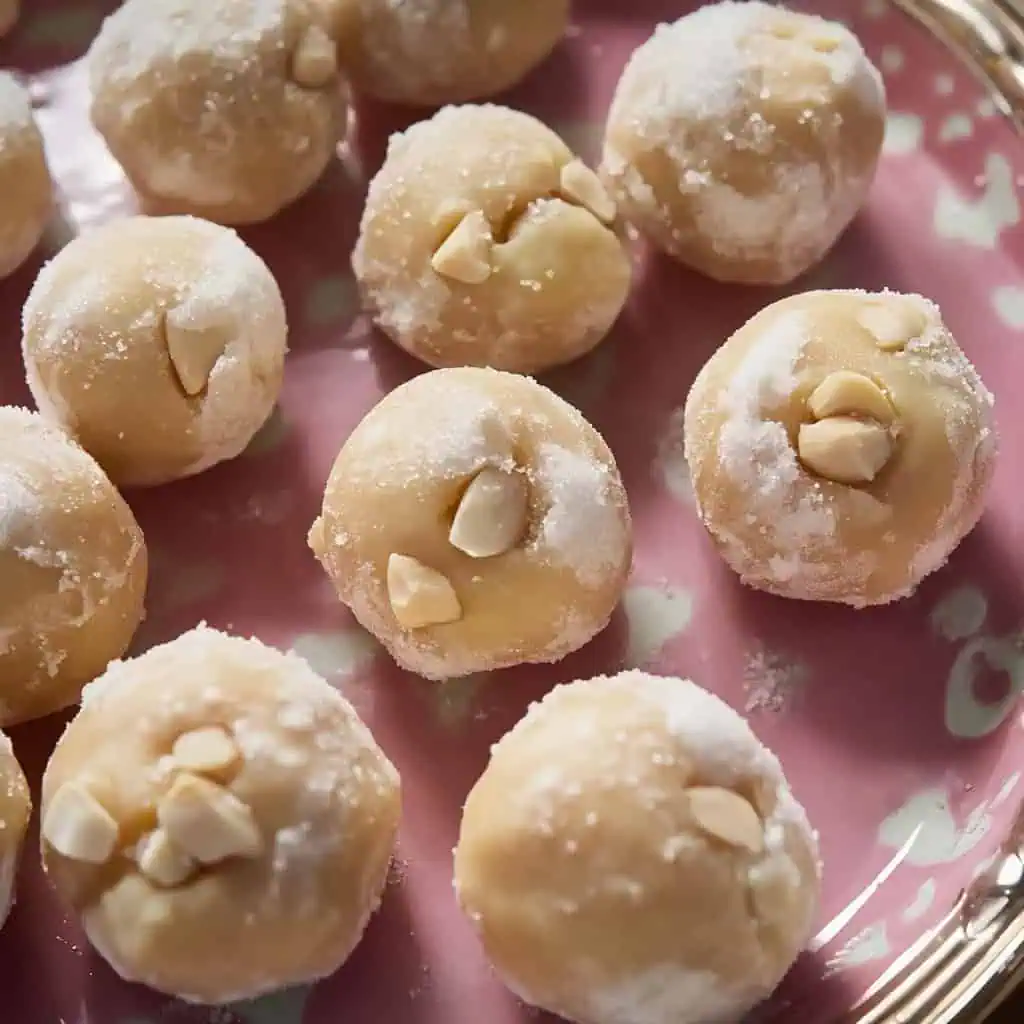
Why You'll Love This Recipe
- No baking required - perfect for hot days
- Kid-friendly recipe - great family activity
- Customizable with different nuts and flavors
- Affordable Filipino twist on traditional European marzipan
- Makes perfect homemade gifts
- Melts in your mouth with luxurious texture
Ingredients
Each ingredient in this recipe serves a specific purpose to create the perfect marzipan experience. Cashews provide a creamy base that's uniquely Filipino and more affordable than traditional almonds. Powdered sugar creates that melt-in-your-mouth texture while vanilla extract adds warmth and depth.
The water acts as a simple binder that lets the nut flavors shine through. The almond extract, though optional, adds that classic marzipan note that makes these treats instantly recognizable. Finally, the sugar coating creates a delightful contrast between the soft interior and slightly crisp exterior.
Together, these simple ingredients create a luxurious treat that tastes far more complex than the sum of its parts.
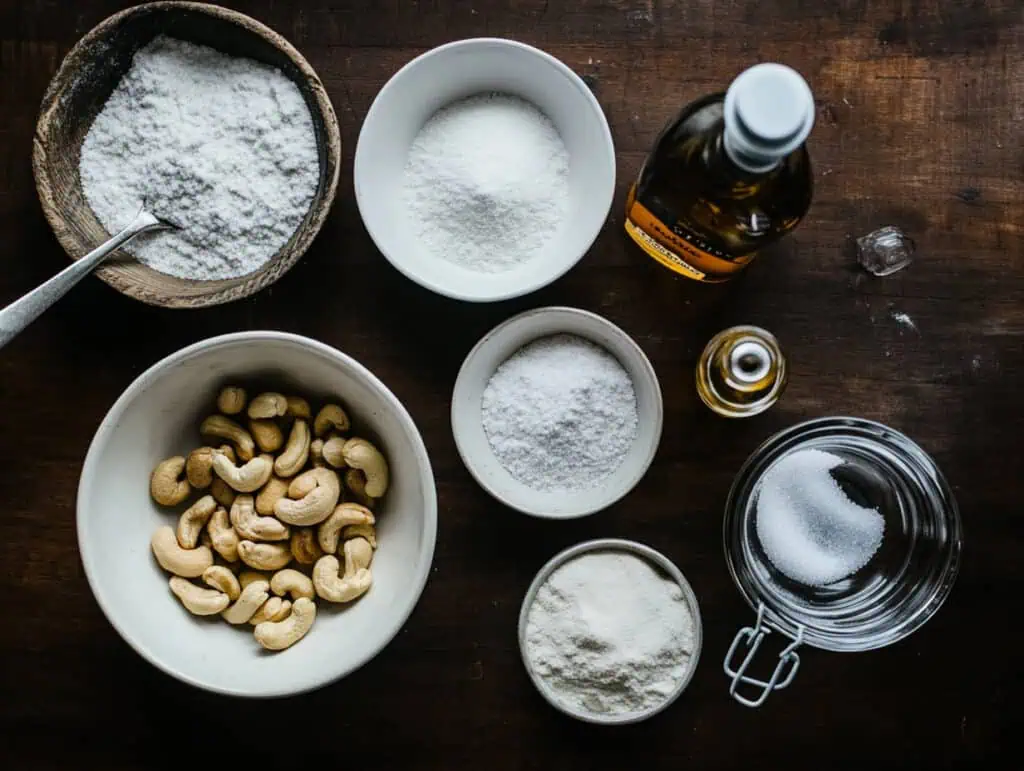
- 2 packs (160g total) salted cashews - The star ingredient that gives our marzipan its distinctive Filipino flavor
- 1¾ cups powdered sugar - Creates the sweet, smooth texture that melts in your mouth
- 5-6 tablespoons water - Binds everything together; add gradually for perfect consistency
- 1-2 tablespoons vanilla extract - Provides depth of flavor and enhances the cashew taste
- 1 teaspoon almond extract (optional) - Adds a classic marzipan flavor note
- 3-4 tablespoons granulated sugar (for coating) - Gives each ball a sweet, slightly crunchy exterior
- 1 cup chopped cashews (optional, for coating) - Creates a more textured exterior with extra nutty flavor
- Yellow food coloring (optional) - For a traditional golden marzipan appearance
Equipment
- Food processor or blender - Essential for grinding the cashews into a fine powder similar to almond flour
- Large mixing bowl - For combining all ingredients comfortably without spillage
- Measuring cups and spoons - For accurate measurements that ensure perfect consistency
- Sifter - Helps remove any lumps from powdered sugar for a smooth texture
- Small cookie scoop or teaspoon - Creates uniformly-sized balls for even setting and professional appearance
- Shallow plate - For rolling the balls in your chosen coating
- Airtight container - For storing your finished marzipan balls
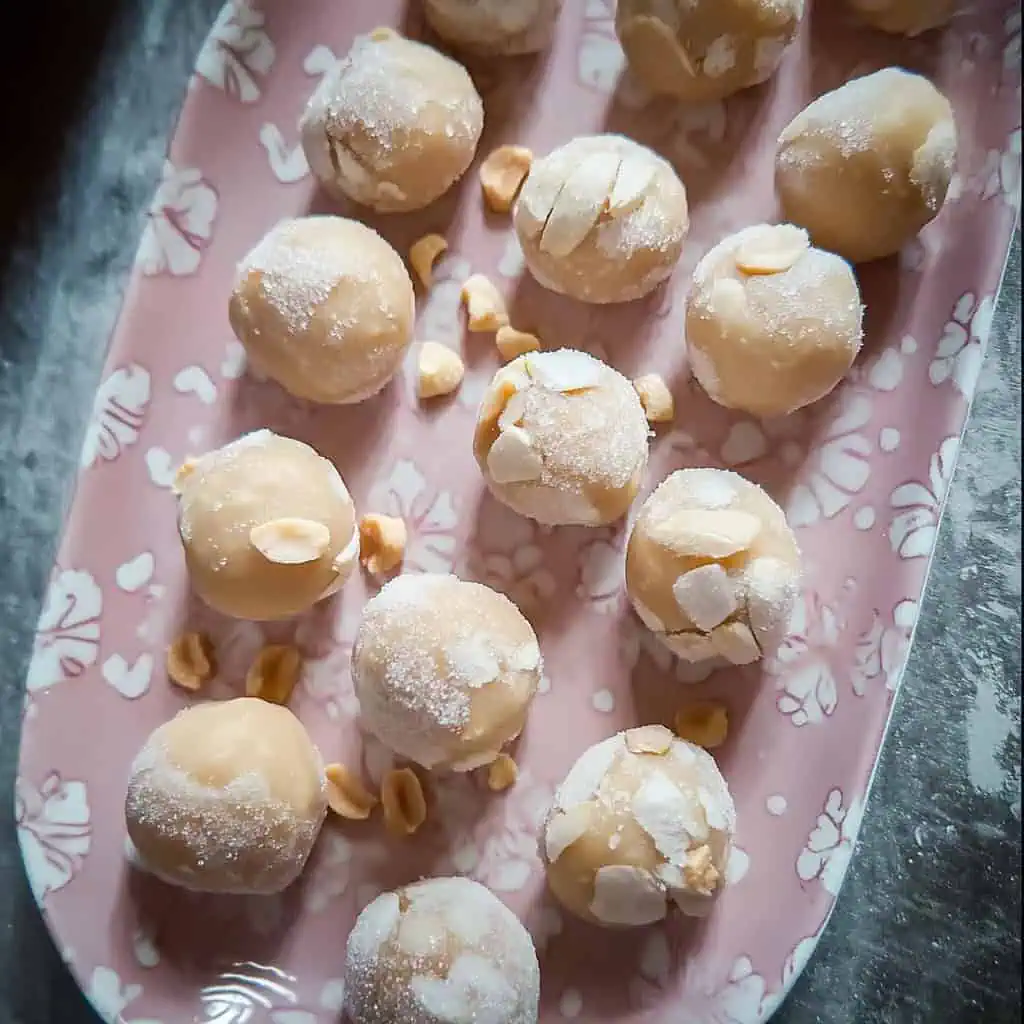
How To Make
- Grind the cashews into a very fine powder using a food processor. Process until they resemble fine sand, being careful not to over-process into cashew butter. Transfer to a large mixing bowl.
- Combine with powdered sugar by adding the 1¾ cups powdered sugar to the ground cashews and mixing thoroughly until well integrated.
- Add flavor and moisture by incorporating 1-2 tablespoons vanilla extract and 1 teaspoon almond extract (if using). Add water gradually, starting with just 1 tablespoon and mixing well after each addition. Continue adding water (you'll likely need 5-6 tablespoons total) until the mixture forms a soft, pliable dough that holds together without cracking when rolled into a ball.
- Prepare your coating by placing 3-4 tablespoons of granulated sugar (or 1 cup finely chopped cashews if preferred) on a shallow plate.
- Form the balls by taking about a teaspoon of the marzipan mixture and rolling it between your palms to create a smooth sphere approximately 2.5cm in diameter (about the size of a large marble).
- Apply the coating by gently rolling each ball in your chosen coating until completely covered. Place on a clean plate or tray.
- Allow to set at room temperature for about 30 minutes before serving.

Tips from Lola's Kitchen
- Use room temperature ingredients for better mixing and smoother texture
- Add water by drops if the mixture seems too dry, being careful not to add too much at once
- Incorporate more powdered sugar if your mixture becomes too wet or sticky
- Clean your hands frequently while rolling to maintain smooth, perfect balls
- Slightly dampen your hands with clean water to prevent sticking while rolling
- Cool, dry storage is best - never refrigerate as it makes the texture too hard
- Ground your cashews thoroughly - the finer the grind, the smoother your marzipan
- When adding extracts, pour them over a spoon first to prevent accidentally adding too much
- For extra smooth texture, sift the powdered sugar before adding to remove any lumps
Substitutions
- Almonds can replace cashews for a more traditional European marzipan
- Rose water (1-2 teaspoons) can be used instead of some of the plain water for a floral note
- Pistachios make a wonderful green variation with a distinctive flavor
- Brown sugar coating creates a caramel-like exterior with deeper flavor
- Coconut (niyog) coating adds a tropical twist perfect for Filipino celebrations
- Honey can replace some of the water for added sweetness and flavor
- Calamansi zest adds a bright, citrusy note unique to Filipino cuisine
- Pandan extract (¼ teaspoon) gives a beloved Southeast Asian flavor profile
Troubleshooting
Problem: Mixture is too crumbly and won't hold together
- Solution: Add water gradually, a few drops at a time, until the mixture holds together when pressed
Problem: Mixture is too sticky and difficult to roll
- Solution: Add more powdered sugar, a tablespoon at a time, until workable. You can also chill the mixture for 15 minutes to firm it up
Problem: Balls aren't smooth
- Solution: Grind the nuts longer for a finer texture, and make sure to roll the balls between your palms until completely smooth
Problem: Coating isn't sticking
- Solution: Slightly dampen the surface of the balls with a tiny bit of water before rolling in coating
Problem: Balls are cracking as they dry
- Solution: Your mixture likely needs more moisture. Add a few more drops of water and remix
Storage & Reheating
- Store in an airtight container at room temperature, away from direct sunlight
- Remains fresh for up to 2 weeks when properly stored
- Do not refrigerate as this makes the texture too hard and can cause condensation
- No reheating needed - these treats are best enjoyed at room temperature
- Layer with parchment paper if stacking in a container to prevent sticking
- Keep away from strong odors as the cashew marzipan can absorb flavors
- If the coating becomes dull, you can refresh it by lightly rolling in fresh sugar
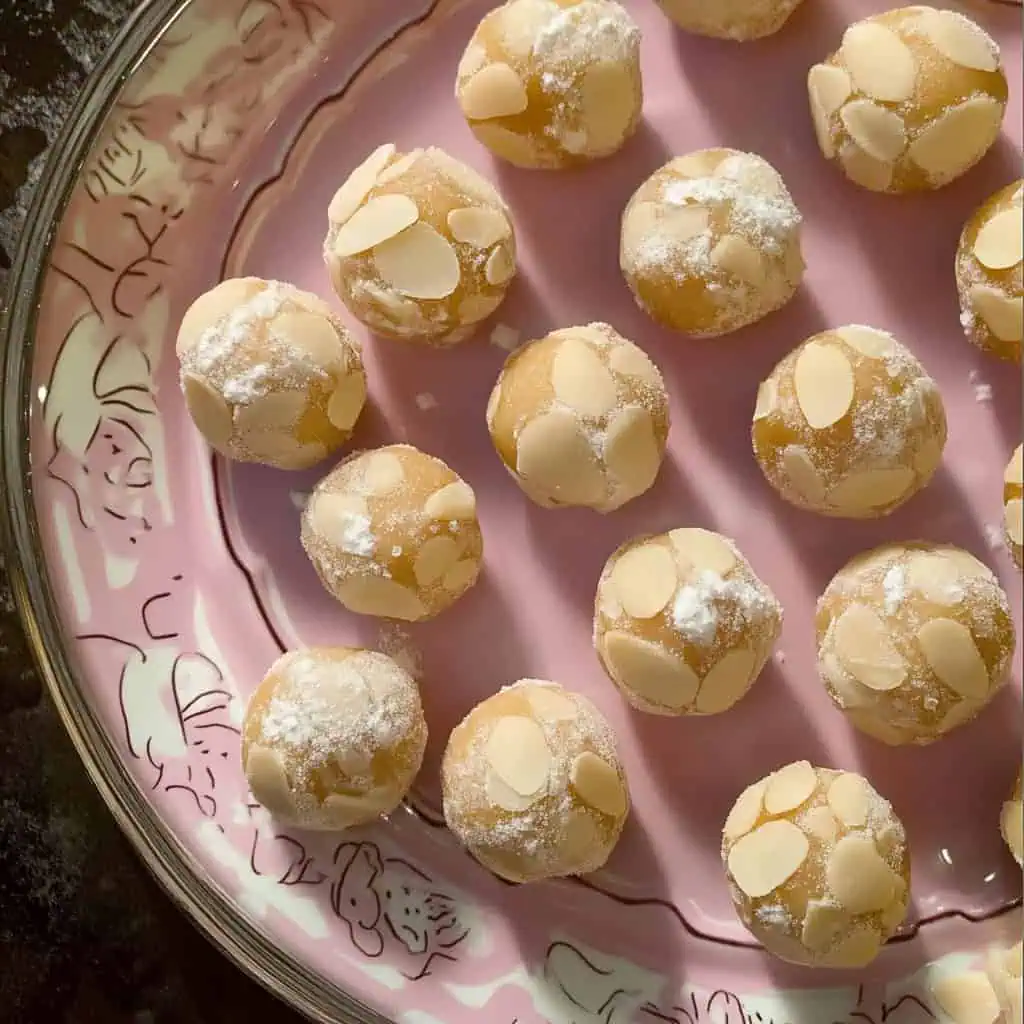
FAQ
Can I make these marzipan balls ahead of time for an event?
Absolutely! They keep well for up to 2 weeks in an airtight container at room temperature, making them perfect for advance preparation.
Why are my marzipan balls cracking as they dry?
The mixture needs more moisture. Add water a few drops at a time, mixing well, until the dough forms smooth balls without cracks.
Can I use unsalted cashews instead of salted?
Yes, simply add a pinch of salt (about ⅛ teaspoon) to enhance the flavors. The slight saltiness actually balances the sweetness perfectly.
How do I know if the consistency of my mixture is right?
The perfect consistency should form a smooth ball without cracks when rolled between your palms. It should be firm enough to hold its shape but pliable enough to mold easily.
Can I freeze these marzipan balls?
While possible, freezing isn't recommended as it can alter the texture. These treats keep well at room temperature, so freezing is unnecessary.
How fine should I grind the cashews?
Aim for a fine, sandy texture - similar to almond flour. If the pieces are too large, your marzipan will be grainy rather than smooth.
My mixture is too sticky to roll. What went wrong?
You may have added too much water. Add more powdered sugar gradually until you reach a workable consistency, or chill the mixture for 15-20 minutes before rolling.
Can children help make this recipe?
This is a wonderful recipe for children to help with, especially the rolling and coating stages. Just ensure an adult handles the food processor for safety.
Related
Looking for other recipes like this? Try these:

Filipino-Style Cashew Marzipan Balls
Equipment
- Food processor or blender (Panghalo/Blender) for grinding nuts into fine powder
- Large mixing bowl (Malaking mangkok) for combining ingredients
- Measuring cups and spoons (Panukat) for accurate measurements
- Sifter for ensuring smooth powdered sugar
- Small cookie scoop or teaspoon (Kutsarita) for consistent portioning
- Shallow plate (Platito) for rolling balls in coating
Ingredients
Base Ingredients:
- 2 packs 160g total salted cashews kasoy
- 1¾ cups powdered sugar asukal na pulbos
- 5-6 tablespoons water tubig
- 1-2 tablespoons vanilla extract
- 1 teaspoon almond extract optional
For Coating:
- 3-4 tablespoons granulated sugar asukal
- 1 cup chopped cashews optional
- Yellow food coloring optional
Instructions
- Start by grinding 2 packs (160g) of salted cashews in a food processor until very fine, like sand. Be careful not to over-process, or it will turn into cashew butter. Pour the ground cashews into a large bowl and add 1¾ cups powdered sugar. Mix these together thoroughly.
- Add 1-2 tablespoons vanilla extract and 1 teaspoon almond extract (if using) to your cashew-sugar mixture. Now comes the important part: add water one tablespoon at a time, starting with just one tablespoon. Mix well after each addition. Keep adding water gradually – you'll likely need 5-6 tablespoons total – until the mixture feels like soft dough and easily forms a ball without cracking. If you see cracks when you test-roll a small ball, add a few more drops of water and mix again.
- Place 3-4 tablespoons of granulated sugar on a plate for coating. If you prefer, you can also use 1 cup of finely chopped cashews instead. Take about a teaspoon of the marzipan mixture and roll it between your palms to form a smooth ball about the size of a large marble (2.5cm). Roll each ball in your chosen coating until completely covered.
- Continue forming and coating balls until you've used all the mixture – you should get about 33 pieces. Place them on a clean plate or tray. Let them sit at room temperature for about 30 minutes before serving. These marzipan balls don't need refrigeration and will stay fresh for up to 2 weeks when stored in an airtight container at room temperature.
- Remember: if your hands get sticky while rolling, lightly dust them with powdered sugar. And if you want to make the balls look extra festive, you can add a tiny drop of yellow food coloring when mixing the dough, or experiment with different coatings like desiccated coconut or melted chocolate.
Tips from Lola's Kitchen
- Use room temperature ingredients for better mixing
- If mixture is too dry, add water by drops
- If too wet, add more powdered sugar
- Clean hands frequently while rolling
- Slightly wet hands prevent sticking
- Store in cool place - never refrigerate
Nutrition
The Story Behind Filipino Cashew Marzipan Balls
While Europeans have been crafting traditional marzipan with almonds for centuries, we Filipinos have cleverly adapted this luxurious treat to match our local flavors and ingredients. Our version swaps expensive imported almonds for locally grown cashews (kasoy), creating a uniquely Filipino sweet that's both practical and delicious. This smart substitution happened naturally as cashews became widely available in our tropical climate, especially in regions like Palawan and Antique where cashew trees thrive.
The origins of our Filipino-style marzipan can be traced to our Spanish colonial period, when European confectionery techniques mixed with local ingredients. Spanish nuns, who were known for their confectionery skills, likely taught early Filipino cooks how to make marzipan. But since almonds were scarce and expensive, creative Pinoy cooks started experimenting with cashews, which were readily available in local markets and provided a similarly creamy, nutty flavor.
Today, these cashew marzipan balls have become a beloved Filipino sweet, often served during special occasions like Christmas, New Year, and family gatherings. Unlike the traditional European marzipan that's often used to cover cakes or shape into decorative figures, our Filipino version is typically shaped into bite-sized balls and rolled in sugar or chopped nuts. It's become a popular choice for pasalubong (homecoming gifts) and a staple at local celebrations.
What makes our version special is its simplicity. While European marzipan often requires precise temperatures and techniques, Filipino cashew marzipan is wonderfully forgiving and adaptable. It's the kind of recipe that gets passed down through generations, with each family adding their own little twists – some add pandan flavor, others dip them in chocolate, and some roll them in coconut for a truly tropical touch.
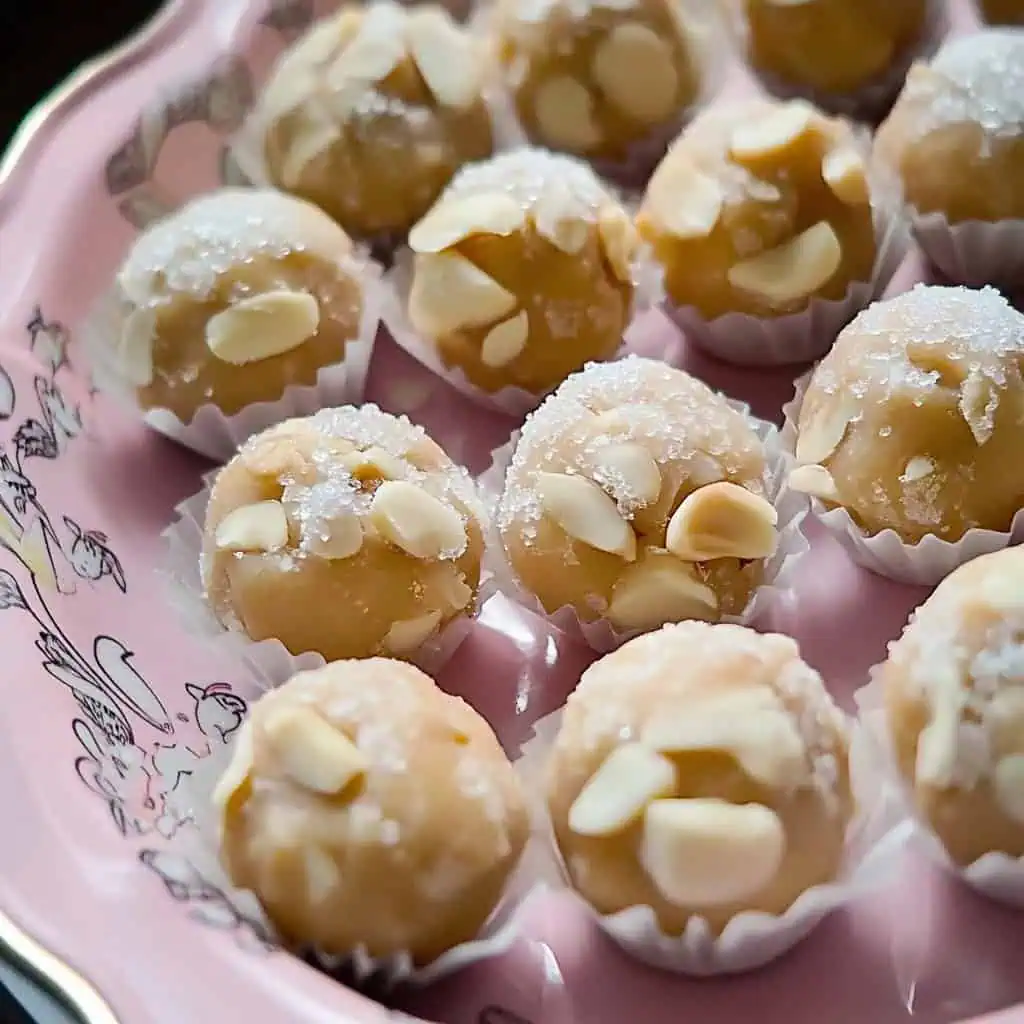






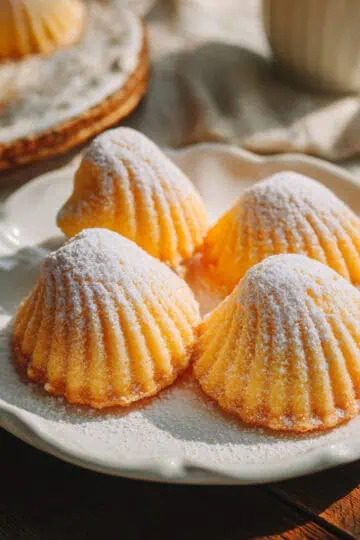
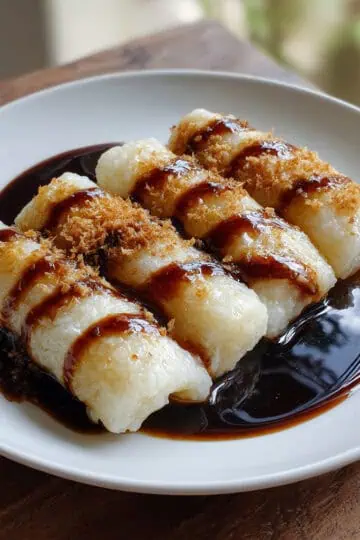
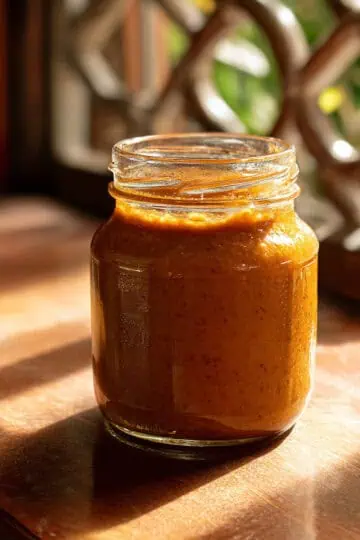
Comments
No Comments